Every tennis player can benefit from the perfect pair of sunglasses. The right pair will provide ease of wear and comfort while protecting you from the sun’s harmful UV rays and eliminating the glare.
Not sure where to start in your search?
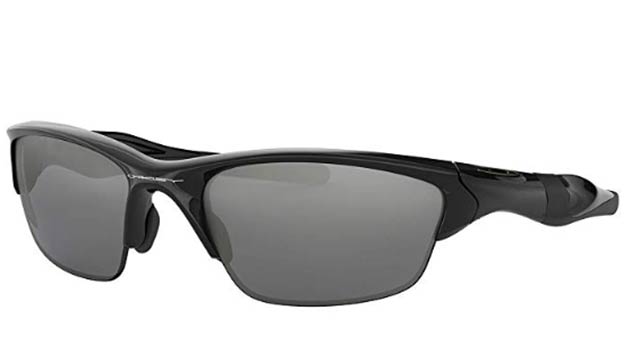
Oakley Half Jacket Sunglasses
Below we list the rest of our top tennis sunglasses picks along with a quick review. Be sure to check out the FAQ at the bottom of the page for even more information.
1. Oakley Half Jacket Sunglasses

While most pro tennis players opt out of wearing sunglasses, Oakley glasses have been donned by tennis pros such as Sam Stosur and Tommy Robredo. The Oakley Half Jacket glasses are designed to optimize vision in active, outdoor environments. The extra large lenses are unisex in style and provide a high level of coverage.
Pros: The frames are made from a high-quality acetate plastic. The polarized lenses are designed to provide a sharp, clear view without the distraction of the sun’s glare.
Cons: These sunglasses are a financial investment, and the cost may be a deterrent for some.
2. RIVBOS Polarized Sport Sunglasses

Rivbos sunglasses are designed with the athlete in mind! These unisex sunglasses feature a wraparound deisgn that fits comfortably without the risk of falling off mid-movement.
Pros: These glasses are very affordable and the lenses come in ten different tints. This is a great option for a new sunglass wearers! They come with a rubber nose piece to keep from slipping.
Cons: These sunglasses do have a distinctive sporty wraparound style, which may not be preferable for all wearers. In addition, the numerous tints may be a bit challenging to decide between (although we recommend the amber/yellow or gray tints for tennis.)
3. Tifosi Women’s Alpe 2.0 Sunglasses
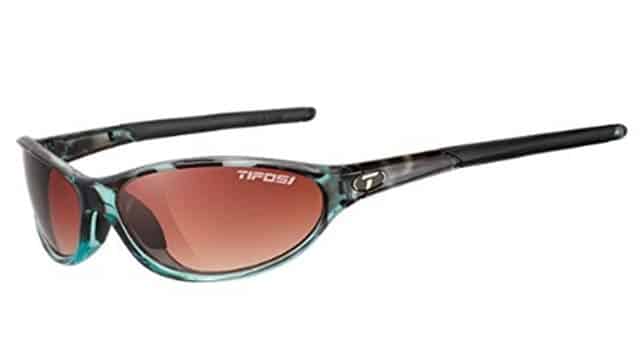
These Tifosi sunglasses feature polycarbonate lenses and 100% UV protection coating. The rubber ear and nose pads are designed to increase grip when you sweat, reducing the potential for slipping.
Pros: These sunglasses are affordable, lightweight, and durable.
Cons: The lenses are not polarized.
4. Bolle Bolt Sunglasses
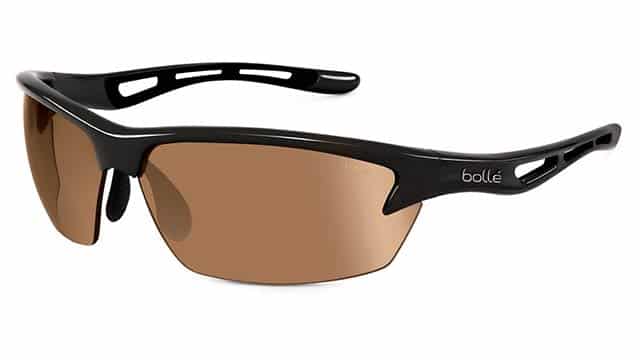
Bolle Bolt sunglasses contain polarized lenses which are uniquely designed to align with the sun’s light rays, allowing you to maintain a sharp, clear view. Bolle Bolt’s polycarbonate lenses are designed for athletes; they are twenty times more impact resistant than glass and three times as light.
They were originally intended for golfers, but work great for tennis as well.
Pros: These glasses are fog resistant and fit very well on larger faces.
Cons: Bolle Bolt glasses are a bit of an investment; there are more affordable options on the market.
5. Nike Show X2 Sunglasses
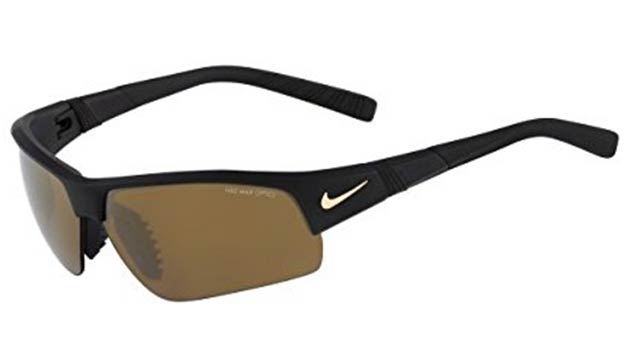
Nike Show X2 sunglasses contain interchangeable dual shield lenses, designed to adjust to multiple light angles. The semi-rimless frames help to provide unobstructed vision while still protecting your eyes from UV rays.
Pros: The Show X2 sunglasses have stylish black frames with yellow Nike logo. In comparison with many other high quality sunglasses designed for athletes, they are quite affordable.
Cons: These sunglasses are designed for men, so they are not the best option for female golfers.
6. Nike Tailwind Sunglasses
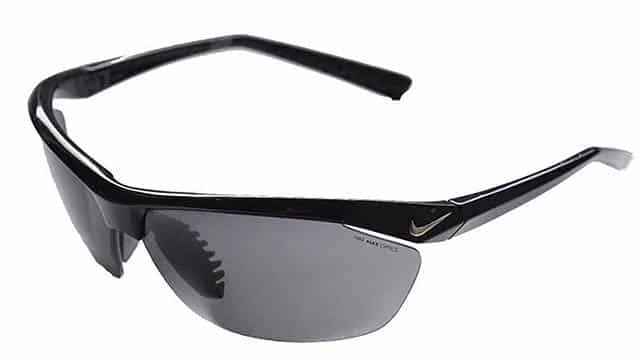
Nike’s Tailwind unisex sunglasses contain tiny vents to release sweat and allow air flow, so your glasses don’t fog up mid-swing! The Tailwind features an adjustable, ventilated nose bridge, making these glasses easy to keep in place.
Pros: Tailwind glasses are lightweight and very comfortable. The frames are available in blue, black, and gray.
Cons: The lenses are not polarized, so Tailwind is not the best option for those frequently impacted by the sun’s glare.
7. Under Armour Core 2.0 Sunglasses
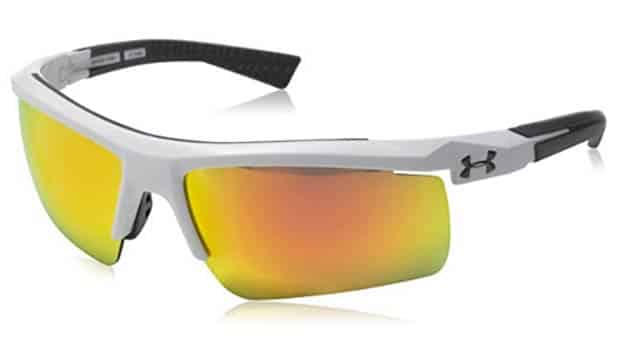
The Core 2.0 sunglasses utilizes advanced lens technology to provide precise optical clarity and protection from impact. These avatar-style glasses contain plastic frames and plastic lenses, with an adjustable nose pad.
Pros: Affordable, designed for maximum durability during impact.
Cons: These lenses are not polarized.
Frequently Asked Questions
Q: Are tennis players harming their eyes from constantly serving into the sun without wearing sunglasses?
A: Ultimately, they could be. photokeratitis and photic retinopathy are just two of several possible conditions that could result. However, it’s kind of akin to asking if getting tackled by a 250 lb linebacker is can harm you. Elite athletes put their bodies at risk that the average person does not.
Q: Why don’t more tennis players wear sunglasses?
A: There are actually quite a few reasons:
- Sunglasses, no matter how well they fit, will move around some.
- Light conditions may differ from point to point depending on weather conditions.
- Sunglasses can diminish peripheral vision in most cases.
Most of these concerns don’t affect the casual player, but at the elite level any advantage is needed.
Q: Which tennis players wear sunglasses?
A: We mentioned a couple above, but here’s our full list (that we know of):
- Sam Stosur (Oakley)
- Tommy Robredo (Oakley)
- Martina Navratilova (prescription)
- Heyon Chung (for astigmatism)
- Janko Tipsarevic (Oakley, prescription goggles)
- Denis Istomin (Oakley, prescription)
Q: Is it better to play tennis in the sun with a hat or sunglasses?
A: For performance, a hat would be better. For your eyes, probably sunglasses or both.
Q: What color lens is best for tennis sunglasses?
A: The following is quoted from Ocular Hazards of a Tennis Sunglass by Michael F. Marmor, MD:
“Through a blue-green lens, a yellow ball appears greenish and thus is less visible against the green court (which will seem bright through this lens).
“Furthermore, blue light in general is less effective physiologically with respect to functions such as acuity, contrast detection, and motion perception.
“A neutral gray or amber sunglass that blocks 99% to 100% of UV-A and UV-B light will provide additional protection and may even help slightly to make the ball stand out (depending on the color of the court).”
Q: Do I prefer polarized or non-polarized lenses?
A: The best way to answer this question is to test out both types of lenses in a sunny environment and decide how you’re affected by the glare. Everyone has different preferences, but fortunately there are a wide range of lenses on the market to meet your specific needs.
Q: Do I need prescription sunglasses?
A: Many sunglass brands offer prescription sunglasses for athletes and can easily customize lenses for you if your submit your lense prescription. Of course, non-prescription lenses are generally more affordable and simpler to buy, making them a great choice if you wear contact lenses or don’t have any need for visual correction.
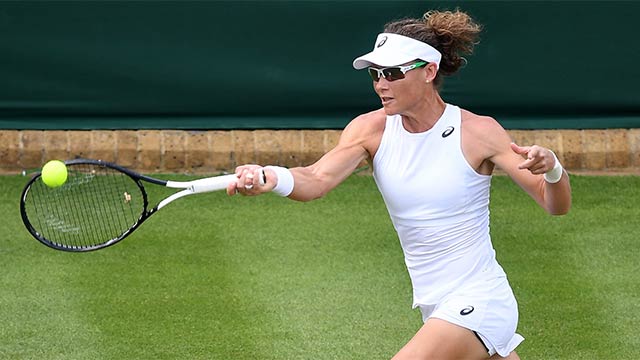

One company has designed a lens that can pick out the yellow of a tennis ball, making it easier for the player to follow on a bright day; while another company even tests for sturdiness by firing steel bullets at more than 1ph at its sunglasses.
Are there sunglasses that stop the sweat from reaching your eyes? There has to be one color of lenses that bring out the best clarify. I had a pair of driving sunglasses that even on a cloudy day would look sunny and everything so clear. Unfortunately I broke them
Hello, what company makes the sunglasses that can pick out the yellow of he tennis ball?
thanks, Len
Bolle make the Competevision lens which are a green lens for tennis. I found they work well.
There is some evidence that polarised lens are not good for tennis, something to do with angle of line of sight required for the polarisation to work without causing visual distortion. Tennis players don’t usual face glare anyhow.
Oakley used to make a green iridium lens which I found really good but now they only make the Prizm lens ( I think some have the iridium coating) and the green one has too little light transmission compared to the old plain green iridium lens.
Interesting about Tziparovitch wearing goggles maybe I guess to cause less peripheral vision restriction.